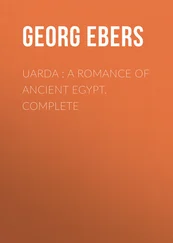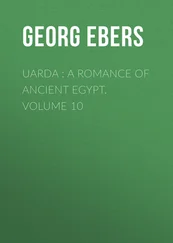Special Topic 2.1 Canons of Egyptian art
State formation and the imposition of a common rule over the entire country came with a reform of artistic practices that applied to all official art and remained the canon throughout Egyptian history into Roman times. The imposition of these rules was absolute. Even carvings on rock surfaces in the desert conformed to the new iconography of the state, which focused on the king. From the Early Dynastic Period on, all formal monuments – reliefs, paintings, and statues – adhered to the same principles.
Figures were firmly placed on a level horizontal base line and the representation of the rest of the body started from that line. In the Middle Kingdom a grid with 18 equidistant horizontal lines contained the body up to the hairline: six lines for the distance from the soles of the feet to the knees, nine to the buttocks, 10 from the knees to the neck, and two from the base of the neck to the hairline. A vertical line from the ear down bisected the torso. Various periods used somewhat different proportions, and figures could be squatter or more slender, but the basic ideas remained the same.
Egyptian artists aimed to show as much as possible of the human body. In relief sculptures they depicted a person in profile, but represented certain elements in full view forward so they could be seen clearly. They showed the chest frontally and placed an enlarged eye near the side of the head. They attached a woman’s breast in profile to the frontal chest. A man’s legs were set apart so that the one farthest from view was visible; a woman’s legs were together.
Artists represented elite members of society in select poses only and in perfect physical condition and of an ideal age. For men the age was full‐grown, either youthful or more mature; for women it was youthful only. In some periods men appeared with signs of fatigue or old age on their faces, but that is rare. The flesh was painted in conventional colors: men, who spent time outdoors, were red‐brown; women, who stayed indoors, yellow. Non‐elites appeared in more varied poses – doing manual labor, for example – but with the same skin colors and proportions. Foreigners were shown as caricatures almost: Syrians had pointed beards, Nubians curly hair, and so on.
The aim of the artists was not to present a portrait of the person but an idealized form without a specific visual identity. The inscription on the representation stated who it was. It was thus easy to usurp an image: one could just remove the existing name and replace it with one’s own.
2.5 The Invention of Writing
All these ideological structures of the Egyptian state were facilitated, if not made possible, by the existence of writing. The origins and development of early Egyptian script formed a seminal part of the creation and maintenance of the state, paralleling the processes of state formation in many respects. The earliest evidence of a coherent system of notation comes from tomb U‐j at Abydos around 3250 BC, while all the elements of the standard Egyptian hieroglyphic script are clear in the mid‐1st dynasty around 2900, and the fully developed usage is attested from the mid‐2nd dynasty on, around 2750. As is the case for the origins of the state, the earliest stages of writing are not entirely clear to us, and scholars debate what elements of the later Egyptian script they already include. Moreover, the reasons why writing originated are also disputed. The discussion here is thus one of several potential reconstructions.
Among the grave goods in tomb U‐j at Abydos were a number of inscribed objects. Some 160 square bone and ivory labels, which were originally tied to bales of cloth or other goods, contained incised signs, while about 125 jars had one or two signs painted on them. Often there are multiple examples of the same inscription. The total number of distinct signs is only some 50, most of them found on more than one object. Those on the labels include numerals and word signs, but almost never on the same object. The jars contain word signs only. The numerals include single digits and a sign for 100. All other signs are pictorial and they mostly depict birds. The excavator of the tombs believes that some signs render entire words, and others the sound of parts of words, as was the case in later Egyptian script, but the evidence is inconclusive. Most of the signs on labels and jars probably indicate the provenance of the products, the name of a region or an estate, while others may render the names of kings and gods. Any actual reading is tentative, however. Yet, the material shows that people at the places of origin and destination of the products all understood the same system.
The invention of hieroglyphic writing as it would be used for millennia in Egypt took place in late Predynastic and Early Dynastic times. It made the rendering of the sounds and meanings of the spoken language possible, although writers did not aim at a complete recording of all elements of speech. Especially the earliest inscriptions were terse and only indicated the essential concepts of a message. They did not provide grammatical forms or all the components of a sentence in the spoken language. We do not know whether or not people spoke a common language throughout Egypt at the time writing was invented, although it is clear that they wrote only one language.
The hieroglyphic script contained two basic types of signs: those that indicate a word through meaning (we call them logograms or ideograms) and those that indicate a word or part of it through sound (we call them phonograms). The same sign can have both functions, and oftentimes the ancient scribe drew a short vertical stroke underneath a sign to show that it should be read as a logogram. Hieroglyphic signs are pictorial and their origins lie in drawings from which one can often extrapolate meaning. The picture of the sun ⊙ can mean “sun” and semantically related words such as “day.” The pronunciation of the word was not indicated at all, and one could only read the logogram aloud if one knew the language recorded. Some such signs were never pronounced. A group of them were what we call determinatives. They appeared after almost every word to clarify its nature. For example, when the determinative of a man followed the logogram that indicated the basic idea “to write,” it indicated “scribe”; when the determinative representing a roll of papyrus followed the sign, it meant “writing.” Determinatives were very common in ancient Egyptian writing, guiding the reader in choosing the right meaning of the logographic signs.
Logograms by themselves can convey much information, but they allow room for error. They also cannot render most names, which were central to the earliest inscriptions, or nonfigurative notions such as “good” or “to desire.” Thus the Egyptians developed a set of signs that could be read phonetically, containing one to three consonants. They did not indicate the vowels that accompanied the consonants, and each sign had multiple readings. The sign for the consonant m, for example, could represent the syllables ma, me, mi, etc. Among the phonograms are 24 signs that cover the consonants of the Egyptian language. Theoretically these could be used to write out any word, as in an alphabet. Those are the signs that shops in Egypt today use to write out tourists’ names in hieroglyphs. But the ancient Egyptians never limited themselves to those. They saw them on the same level as signs that record two or three consonants, such as nr or nfr with any combination of vowels. Phonograms appear in the earliest inscriptions to write out dynasty 0 or dynasty 1 royal names. We speak of the palette of Narmer because of the appearance of the n’r and mr signs in the serekh . Our understanding of these early writings is restricted, however. Narmer’s name appeared in inscriptions from all over Egypt and Palestine, and multiple ways to write it out existed. We may be mistaken in our reading of it.
Читать дальше












